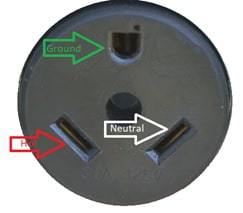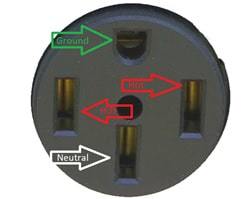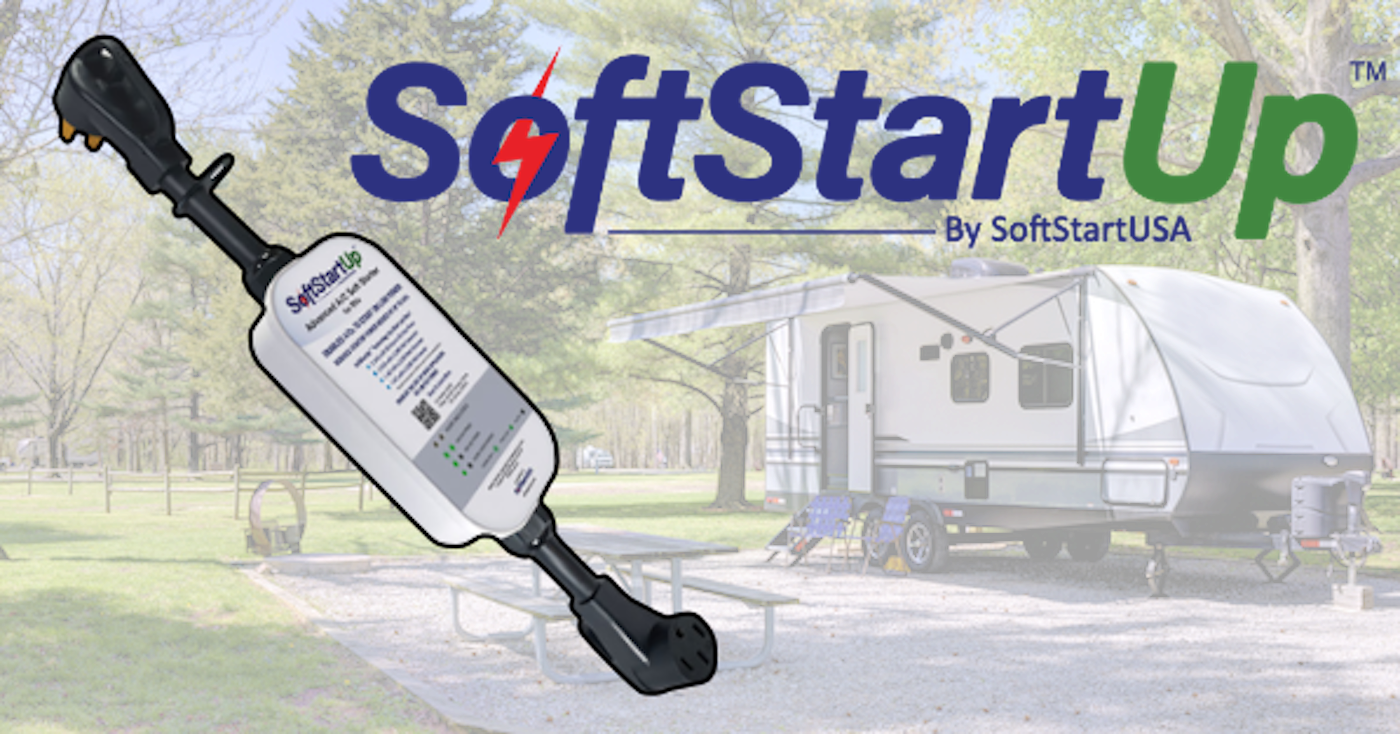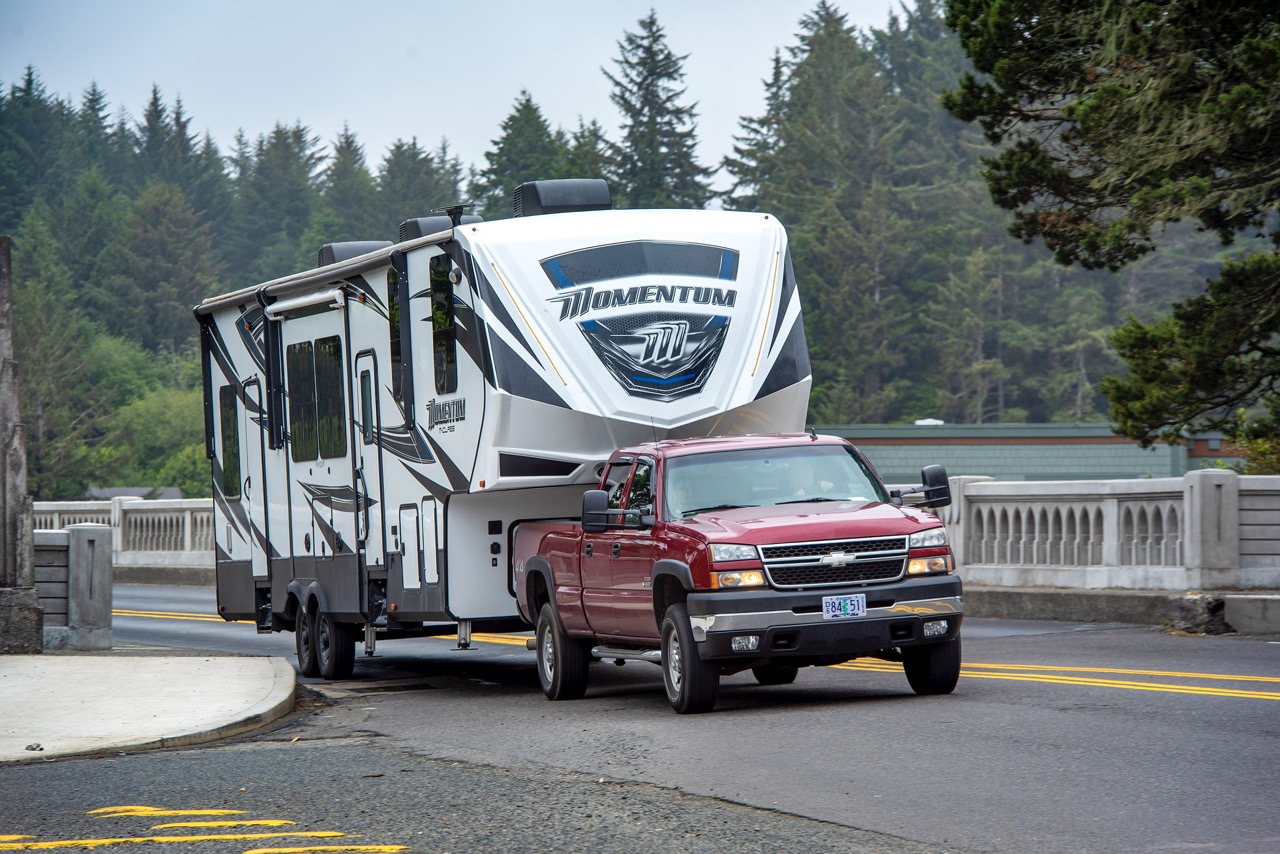Testing the shore power outlet is an important step when arriving at a new campsite.
An outlet that has been improperly wired could have too many volts, too few volts drop off, or reversed polarity. If the voltage drops, the appliances in your RV will work and appear to be working correctly, but they are working harder and may be damaged by the lower voltage. High voltage can also do damage by over loading and burning up parts of your electrical system. Too much power could also cause a fire. Reversed polarity is dangerous because it could create a situation where the outside of the camper then charges and someone touching the outside could be shocked or worse.
Wiring errors can be caused by incorrect installations or shorts in the system. Anytime you encounter a wiring error notify the camp attendant or manager and request a new site. Do not plug into the power if it is not wired correctly.
But how can you actually know that it’s safe to plug in your RV or Camper? The only way to know is to test the outlet before plugging in. Here’s exactly how to do that test.
Volts, Amps and Watts
Volts is the amount of force that an electrical current has. Amps is the amount of current. Multiplying the volts and amps give you the wattage or the amount of work the power supply can do. Another way to look at this is like with water, voltage is how much water pressure you have and Amps the diameter of the hose. The greater the diameter and the higher the pressure the more work the water can do and the more it hurts when it hits you. A normal 15 amp house outlet is like a garden hose and a power line is like a fire hose. Our campers are using something in between those.
What limits the power
Campers and RVs can consume a lot of power and can sometimes exceed the power that is available, especially if you are plugged into a 15-amp outlet. How much the power source can supply is limited by the size of the wire running from the breaker box to the outlet. The wire is protected by the circuit breaker. The circuit breaker should always be the weakest link in the system.
Using a 15 amp extension cord on a 30-amp circuit to connect your camper to the power supply is dangerous and could result in a fire. The extension cord becomes the weak link in the system. The camper can easily draw more than 15 amps even without the air conditioner and the circuit breaker won’t trip until double the extension cords capacity. The extension cord will heat up and catch fire before the breaker trips.
Generator limitations
If you are considering a generator you will need to get one that can produce the necessary wattage. A camper that has a 30 amp plug needs 3600 watts of power to operate everything in the camper. If your generator only produces 2400 watts you will be limited to running the lights, the fridge and maybe the microwave. A 50-amp camper still uses 120 volts but there are 2 hot lines bringing in power for a total of 12,000 watts which means a big generator with lots of power. When shopping for a generator look for a 30 or 50-amp RV outlet. If the generator does not have one of these outlets you will be limited to the size outlet that is available. Some generators may have twist lock type outlet which will require an adapter but should allow you to take advantage of all the power the generator is capable of producing.
Refer to your owner’s manuals for your camper and its appliances for specific information on how much power is required for it to operate safely.
Outlets
15 amp outlets
These are the most common outlets and are like those found in your home. On a 15-amp outlet the ground is the rounded one, the hot side is on the right and the neutral in on the left when ground is oriented down. The neutral may also be slightly larger than the hot side. The neutral side may also be T-shaped these are outlets that a safe up to 20-amps. When using adapters to plug into this outlet you will have a very limited power supply which could be limited further because additional appliances or lights may be plugged into this circuit.

30 amp TV outlets
These are the most common outlets found in camp grounds. The ground is the rounded one, the hot side is on the left and the neutral in on the right when ground oriented up. The outlet should be a dedicated line and will be able to completely power most RVs and campers, except those requiring 50 amps.
50 amp outlet

On 50 amp RV outlet there are 2 hots, 1 neutral and 1 ground. The ground is at the 12 o’clock position and the rounded slot, the neutral is at the 6 o’clock and the hot lines are at 3 and 9 o’clock positions. These outlets will power just about everything. A camper requiring 30 amps could plug into these outlet using an adapter.
Voltage
The voltage needs be between 108 and 125 volts to safely operated you camper’s appliances. Low voltage is just as harmful as high voltage to the appliances in your camper. Low voltage is going to cause the motors to work harder and wear faster. High voltage is going to give too much current and burn up components of the system. Too much could also over heat the wires in the camper causing a fire.
Polarity
Polarity is how the wires are connected the hot should be to the hot side, neutral the neutral side of the plug and the ground should be properly grounded. Having current in the wrong pole can cause things to become charged that should not be, including the outside of the camper. It is also possible to have incorrectly wired outlet and have everything working correctly and not know it.
Tools
The tools needed to test the outlet on the post are not expensive and can be purchased from Amazon and many can be found at your local hardware store. You may even already own some. I recommend getting a set to keep in the camper’s tool kit.
Multimeter — It does not have to be a super high-end model but one with digital numbers will be easier to read. These can do several tests so keep the manual handy for other repairs. This one is currently under $10.00 on Amazon.
Nonconnact tester — This will detect current when it is placed in the slot on the outlet. It can also be placed on wires to confirm current. Try to get one that will indicate for voltage as low as 90 volts. This one is currently about $7 on Amazon.
Outlet tester – This tester has 3 lights on it and will tell you if the outlet has been wired correctly. It is easy to use just plug it in. These are about $5.00.
Voltage meter – This works just like the outlet tester just plug it in and it will give the voltage on the outlet. This one is color coded and easy to read but you could also get one with digital read out. These are also under $10.00.
Adapter – This is a simple 30 amp male to 15 amp female adapter which will allow you plug in the outlet tester and the voltage meter. This one is currently about $8 but I have seen it as low as $5.
15 and 30 amp test
Fifteen and 30-amp circuits are setup the same one hot, one neutral and one ground. The steps for testing are the same if you testing a 30-amp line with plug in testers you will need an adapter.
Voltage
To test the voltage on a 15 or 30 amp outlet with a plug-in style Tester. Plug in the tester and read the number on the gauge to make sure it is in the safe range. The range is between 108 volts and 125 volts.
Polarity
To test for polarity on a 15 or 30 amp line, use a 3-prong outlet tester that plugs in just like the voltage meter. The tester has six probable wiring conditions and indicator lights to tell you if outlet is wired correctly. There chart on the tester that will tell how the outlet is wired.
This type of tester will not catch every wiring error but will get you close. The error that it does not catch is a reversed ground to neutral jump. Something, I did not know until researching for this article. Here is a link to another article on this type of error. With this type of wiring error both the neutral and ground are hot. This type of error could be very dangerous and may cause shocks or electrocution.
I just ordered a Non-contact tester like this one to begin testing for this wiring error. This tester can replace the lighted three prong tester and will catch this error. Hold the tip of the tester to each of slots on the outlet. The tester will indicate when placed in a slot that has current. If the tester indicates current is found in anywhere but the hot side it is not wired correctly.
Multi-meter Test
To use a multi-meter place the black probe on the hot side and the red one in the neutral side, you should get 120-volts. Then test between the hot and ground again you should get 120 volts. Next test between the ground and neutral you should get zero volts. Unfortunately, this will not tell which side is hot. To determine that use the non-contact tester in each slot. Only the hot should have current.
I will be using the plug-in testers and then double checking polarity with the non-contact tester.
50-amp test
To test the 50-amp outlet you will need a multi-meter.
Voltage
To do the test, set your multi-meter to AC volts. Depending on the meter you might have several ranges choose the range that is closest to 120-volts but not less than 120-volts.

The surge protector/outlet tester, plug adapter and voltage meter all plugged into an extension cord because it wouldn’t fit it the box on the pole.[/caption]
First test the ground to natural this should be zero volts. Then hold the black probe to one of the hot lines and the red to the ground you should get 120 volts. Repeat the test for the other hot side. Each side should read 120 volts. Now put the black probe in the neutral slot at the bottom and place the red probe in one of the hot lines again this should read 120-volts. Then move the red probe to the other hot side. If you test hot to hot you should get 240 volts.
My camper is the 30-amp type, so I have never done this test. Here is a video on how to do it.
Polarity
Use the non-contact tester to confirm that only the two hot lines on the outlet have current.
Surge protectors
Surge Protectors are highly recommended for RVs these will protect your electrical system from power surges caused by nearby lighting strikes or surges caused by changes in demand. Many of the protectors also have built in testers. The prices for surge protectors range for $50 to $400. This is cheap protection for your camper. This one for 30 amp services has a built in outlet tester but may not fit in all of the boxes at the supply poles. There are some that have cords on them that might fit better.
This one from Surge Guard for 50 amps service has a built-in polarity and voltage testers. Surge Guard also offers built in options and protection for 30 amp outlets.




On the multimeter test for 30amps, you say “Unfortunately, this will not tell which side is hot.”
If hot to neutral has 110V, then hot to ground has 110V, and neutral to ground has 0V, then wouldn’t it be obvious which side is hot?
Also, why are you recommending the black wire on multimeters be used on the hot side. That should be the ground, or neutral wire. Red is the wire that goes on the hot side.
On the multi meter test Why do you use the black probe on the hot side for 30 v then use the red probe on hot side for 50 v